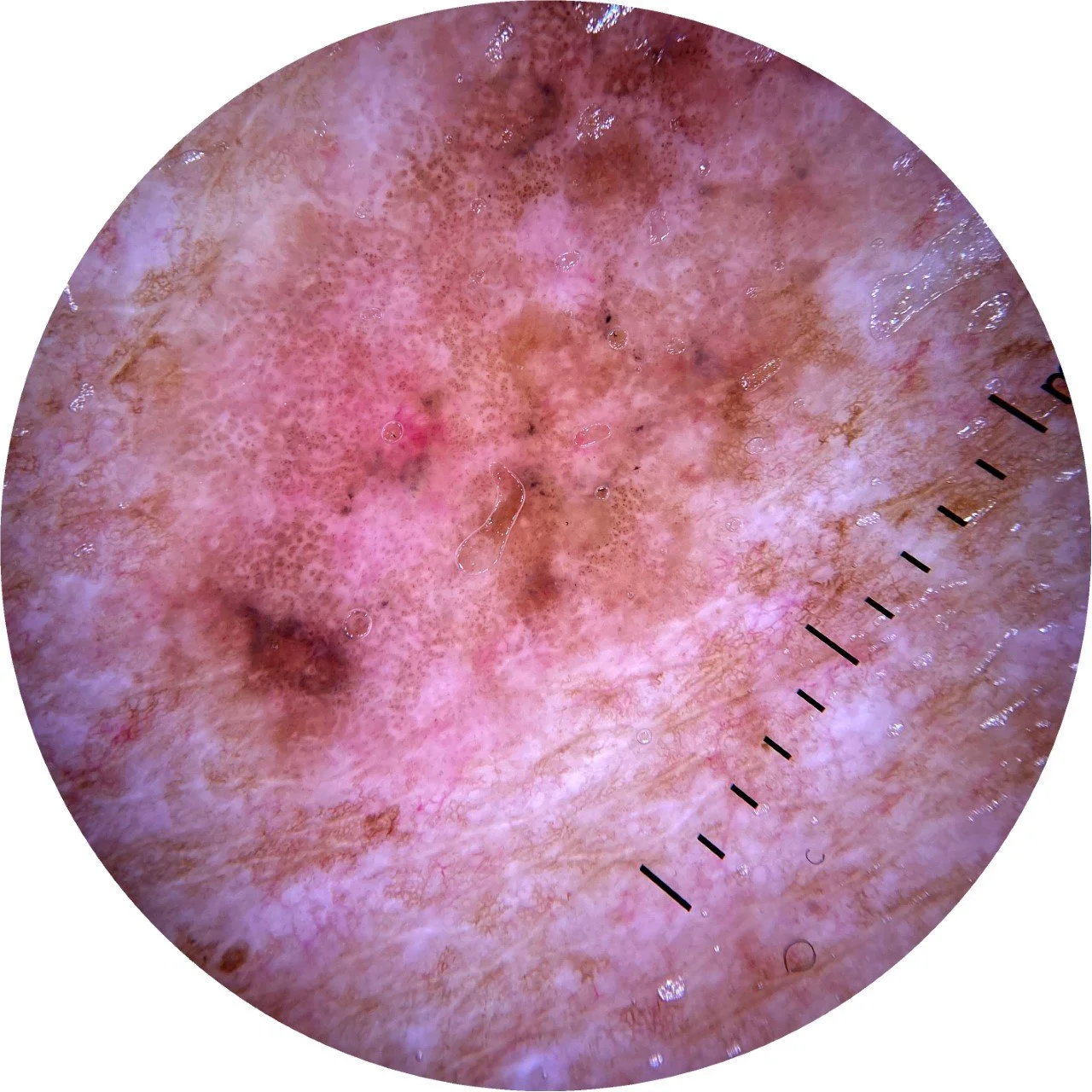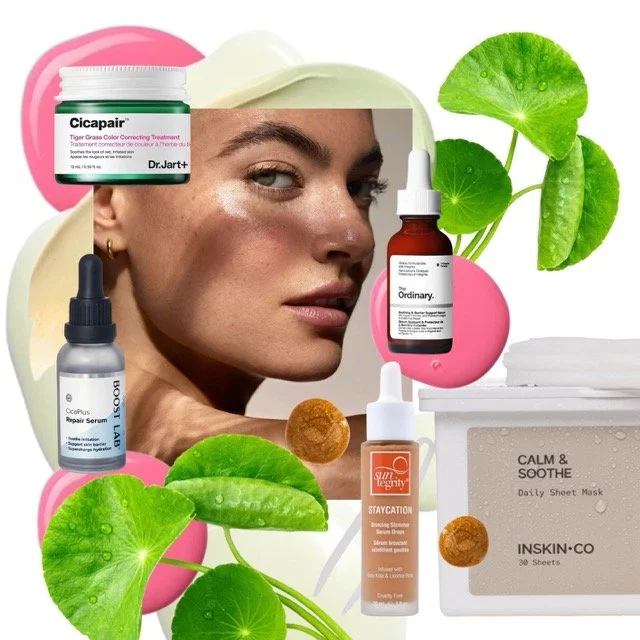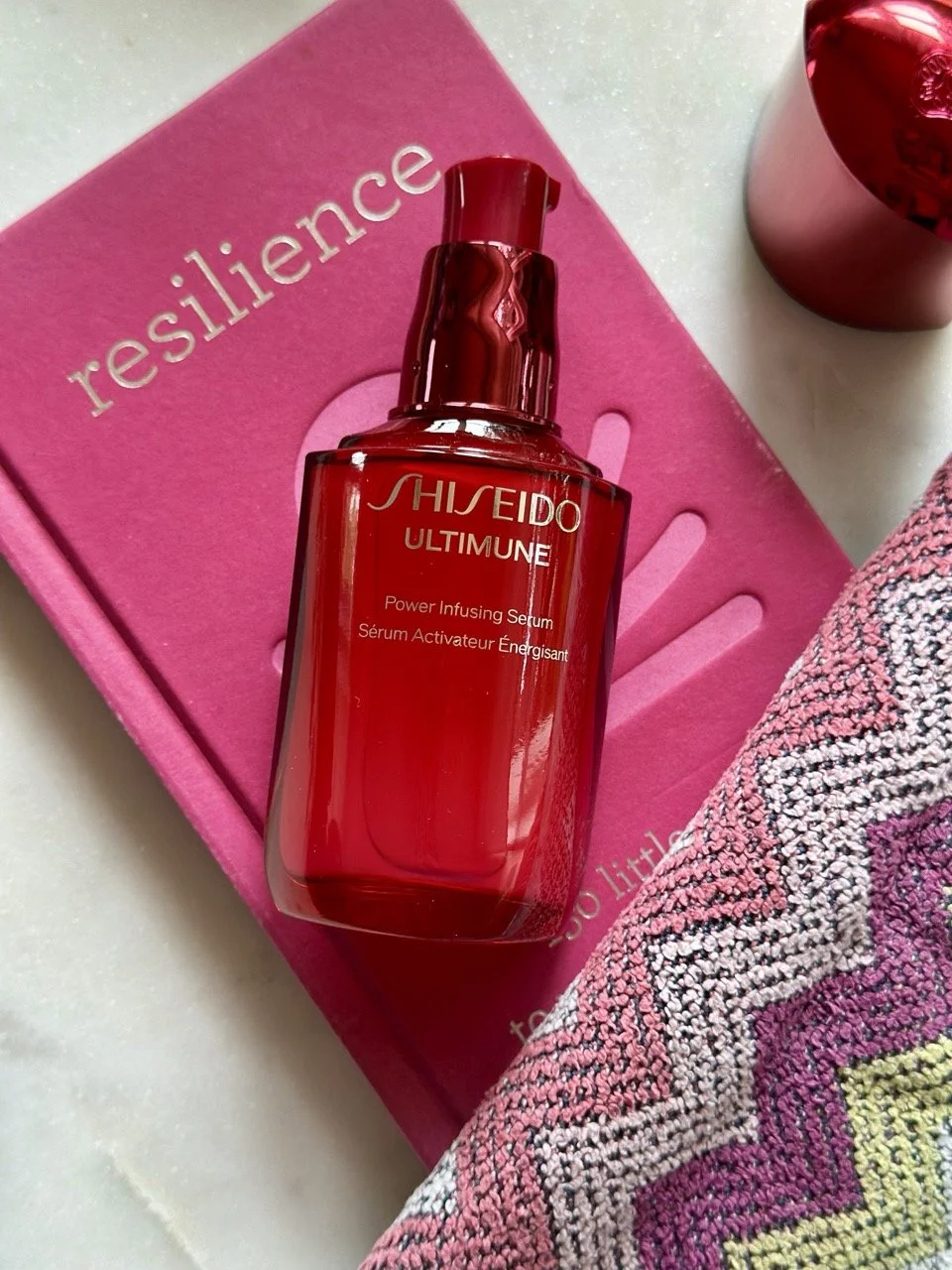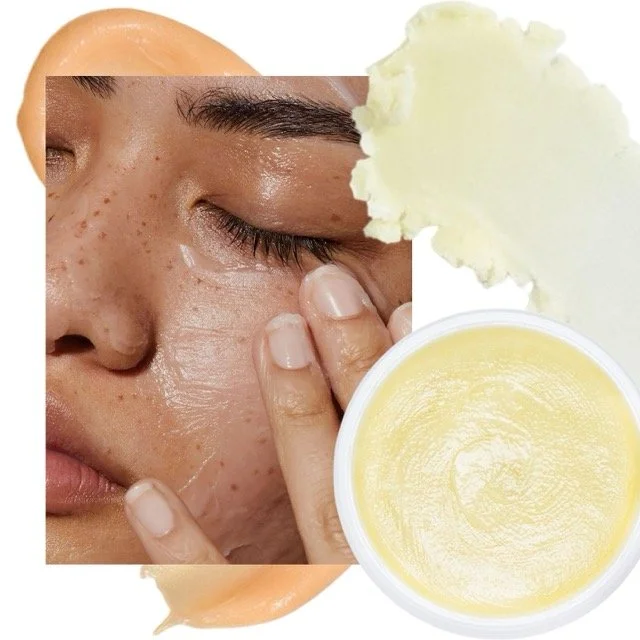New Zealand is enjoying an endless 2021-22 summer. But, while the feel-good factor of sunshine and all the joy our outdoorsy lifestyle brings is uplifting, we have one of the world's highest age-standardised melanoma incidence rates. Here, editor Trudi Brewer asks an expert how and why an inconspicuous mole can become a silent killer.
Nurse Katy Doherty of Espy Skin uses Dermatoscope to detect melanoma. It's a high-quality magnifying lens and a powerful lighting system. Dermatoscopy increases diagnostic accuracy up to 30 per cent compared to visual inspection, depending on the type of skin lesion and the clinician's experience.
We talk with nurse practitioner Katy Doherty, managing director, Espy Skin on Auckland's Takapuna, who, with over twenty years of experience as a registered nurse and decades of dermoscopy and skin cancer surveillance, has one goal. To offer an affordable service, detecting skin cancer before it becomes life-threatening. Dedicated to the early, accurate and ethical detection of all types of skin cancer, Doherty says the stats are scary. Melanoma takes more lives in New Zealand than the road toll each year. But the news is not all bad. "With all skin cancers, early detection can mean it’s not life-threatening." Here Editor Trudi Brewer gets educated on the risks of skin cancers.
What makes melanoma different from other forms of skin cancer?
There are three main types of skin cancers. First, basal cell carcinomas (BCC's), the most common form of skin cancer, 80 per cent of people will grow one of these, usually any time after the age of 35. BCC's are most commonly found on the face, neck and upper torso; they tend to be slow-growing but can cause local spread and severe destruction if left untreated. The second most common form are squamous cell carcinomas that usually grow after 50. They mainly occur on sun-damaged skin, usually on the head, neck, forearm and the backs of the hands and can enlarge quickly over months and metastasise to lymph nodes. Finally, melanoma, which most people have heard of, it's the most serious type of skin cancer and can progress quickly, easily metastasise and become fatal if not detected early.
Not all moles are melanoma. So how can you tell the difference?
Most moles are happy, harmless and remain stable. But 30 per cent of melanoma can arise from an existing mole versus 70 per cent of melanoma as a brand-new mole. So look for any change in size, shape and colour in any moles you have and treat any new mole, especially if you're over the age of 40, as suspicious until you have had it checked by a professional trained in skin cancer detection.
Self-skin checks are your best defence against early detection of skin cancer. So what are you looking for?
The public health message of "check your own skin" has been around for years. Some research states that this is a great initiative, while others suggest it has made no impact. The theory that no one knows your skin better than you is good, right? But in reality, people are mainly concerned about things that are cosmetically unsightly or ugly and not the moles that could kill them. Also, people are typically only worried about the moles that they can see – which means they miss the majority of skin cancers as they are in places that are not visible, like behind them. So I think a better public health message would be: "Get a full-body skin check by a health professional trained in dermoscopy and the detection of skin cancer".
Where is melanoma most commonly found on the body?
Melanoma can be found anywhere - even in those places that never see the sun. For men, the most common spot is the back, and for women, most melanomas are found on the backs of their legs. Which means they are often behind us in places that are hard to see by ourselves. A stark reminder, Bob Marley died of a melanoma that started under his toenail!?
Melanoma Images
Superficial spreading melanoma
Images from Dermnet.nz.org
Typical SSMM SSMM with regression Amelanotic melanoma
Dermatologists talk about looking for the A, B, C, D, E, F and G's; what are these?
It's a reference to a mole. A is asymmetrical when two halves of a skin lesion don't match if you draw a line through the middle. B is for borders. Are the borders of the lesion ragged or uneven? C is for colours; does the lesion have more than two shades of colour? Melanomas can have different colours, including browns, blacks, pinks and grey. D is for different, is the lesion different from your other moles or have a diameter greater than six millimetres. E is for evolving, is the lesion changing in size, shape or colour or elevated like a nodule? F is for the firm; is the lesion firm to touch or painful? And then there are G for growing. Is the lesion growing, getting bigger or spreading? However, I prefer this acronym SCAN your skin, which stands for anything Sore, Changing, Abnormal, or New. Ask yourself, is the spot sore (scaly, itchy, bleeding, tender) if it doesn't heal within six weeks, get it checked. Is it changing in size, shape, colour or texture? Does it look abnormal, look different, feel different or stand out compared to your other spots and moles on your body. And finally, is it new? Has it just appeared on your skin recently? Any new moles should be checked, especially if you are over 40.
How often should you have a full-body mole check with an expert?
For most people, I would recommend yearly skin checks. However, if you have had a Melanoma detected recently or are deemed high risk, you should get checked more regularly. Those people might need to get their skin checked every three to six months.
This is a superficial spreading melanoma on a woman’s back, that had been dismissed twice, by experts as a non-threatening mole. Doherty detected this melanoma at Espy Skin which was six mm deep and excised in time for it not to become life-threatening.
Melanoma under dermoscopy and seen by the naked eye.
How quickly can melanoma become life-threatening?
Melanomas are tricky; some can grow rapidly in weeks or months, while others grow slowly. Melanoma has a 99 per cent cure rate if caught in the earliest stages. Early detection is essential because treatment success is directly related to the depth of the melanoma, how deeply it has grown into the skin and whether it has spread to the lymph nodes and other organs when discovered. If a melanoma is not found early and has metastasised, the prognosis can be poor and often fatal. Although good development has been made in advanced melanoma treatment in recent years, some treatment options are not funded by the government and can be very expensive or simply not available here.
Should we use sunscreen all year round or only in summer?
We have high UV levels here in New Zealand, even in winter. Studies have shown that we should wear sunscreen all year round as it can reduce signs of premature ageing and reduce our risk of growing skin cancers. When skin is exposed to UV rays, it damages our cells at the DNA level, and we cannot undo that damage. So, protection is paramount. The sun's rays cause up to 90 per cent of skin changes associated with ageing. Getting five or more bad sunburns in your early years (before the age of 20) doubles your chances of developing melanoma in your lifetime.
What's your best advice to keep your skin safe?
Wear sunscreen every day. Slip, slop, slap, and seek shade; that message is one to follow. There is no such thing as a safe tan; if you want a tan, get it out of a bottle, don't lie under the sun.
Choose our SPF wisely
When it comes to sunscreen, it’s best to find a formula you like, which ensures you will use it. The team at BeautyEQ swear by SPF 50 and we use a different formula for the face and the body, here are our favourites from the French skincare brand Avène.
AVÈNE SPF50+ SPRAY, $40
We love a sunscreen spray; it's ideal for those hard-to-reach spots on your body often seared by the sun, like behind the knees, the back of the neck, and the tops of the ears. Avène has harnessed all the benefits of the SPF 50 creams and made them into a liquid-like lotion spray, with the same combination of active ingredients in a 'Sunsitive' technology, with minimal chemical sun filters and the potent antioxidant vitamin E, as well as Avène's soothing thermal spring water.
There is also an Avène Sunscreen Children SPF50+, $40.
AVÈNE SUNSCREEN AQUA FLUID SPF50+, $28.
Finding a formula that plays nice with makeup is life-changing. This face screen is formulated with a blend of five active SPF ingredients, including the physical block titanium dioxide while keeping reactive chemicals to a minimum, ideal for those with sensitive skin. With potent photostable vitamin E, coconut oil with glycerin, and the base of soothing thermal spring water - like all Avène skin products. Finally, it's paraben, alcohol and fragrance-free.


























Update your beauty routine with these newbies.